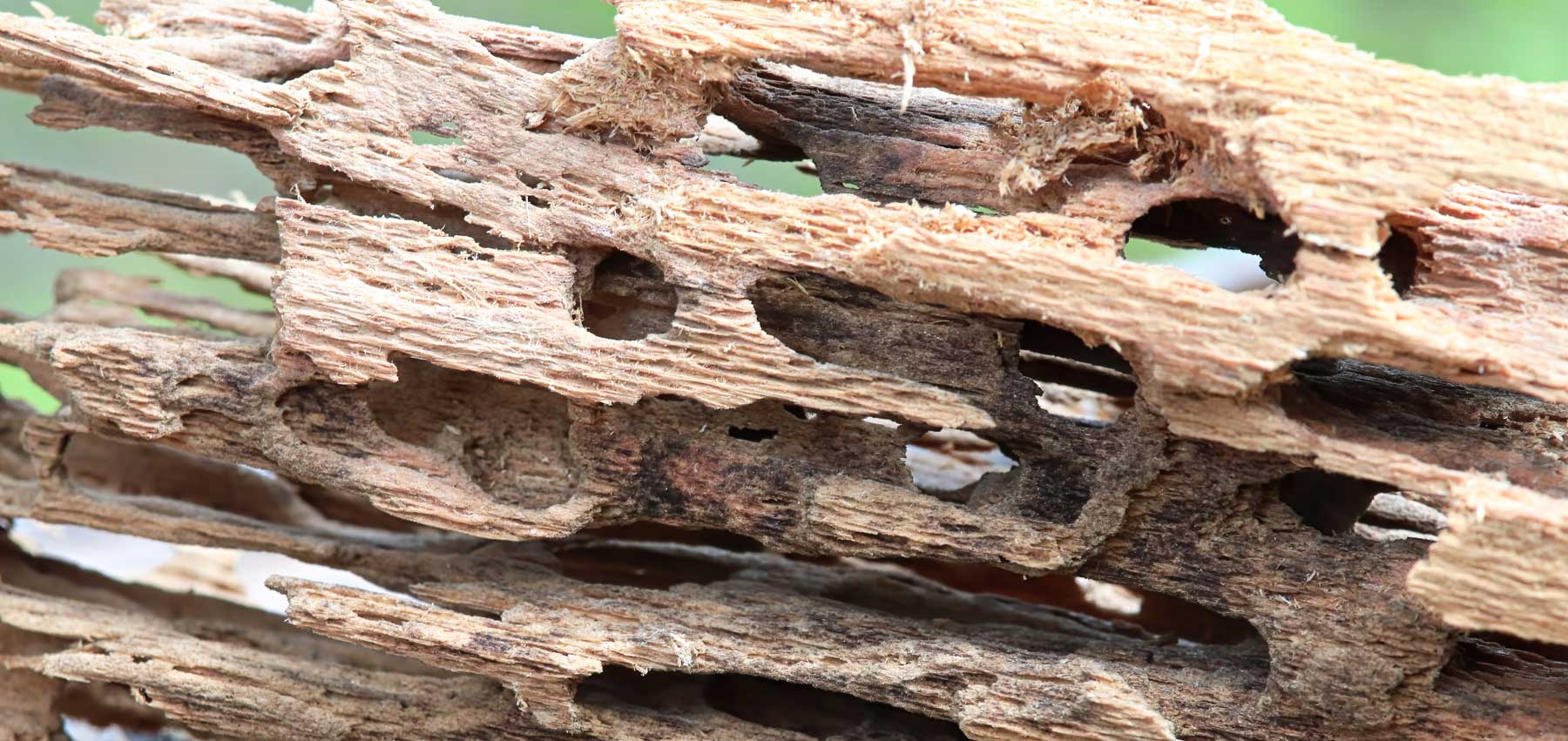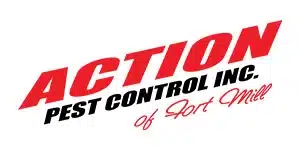How to Identify Wood-Destroying Ants
Proudly Serving South Carolina | North Carolina | Georgia | Florida

The most common type of wood-destroying ant found in homes is the carpenter ant. A carpenter ant is a large black insect, sometimes with wings, that is attracted to soft, moist, or decaying wood. Even though they prefer softwood, these ants will tunnel into healthy wood as well. Carpenter ants create tunnels into the wood with their large mandibles which can be extremely damaging to homes and create expensive repairs. Unlike termites, carpenter ants do not eat the wood, instead, they chew their way into the wood, building tunnels and making nests. Due to their damaging nature, a carpenter ant infestation must be dealt with quickly by a trained expert.
Start With A Quote On Us
Click below to contact Rocket Pest for a FREE pest control quote.
How to Identify Carpenter Ants
Compared to most ants you find in and around South Carolina, carpenter ants are much larger, ranging from 1/8” to 1/2”, and have strong mandibles that help them tunnel into wood. Their coloring is usually black but certain species can have reddish or yellowish coloring. They are attracted to wood that is easy for them to chew through in order to build their nest and create extensive tunnel systems to travel around. These large colonies may contain over 50,000 ants. With these massive colonies, it is easy for a carpenter ant infestation to rapidly wreak havoc on the wood within your home, causing structural damage and creating repair bills that can climb into the thousands of dollars. Signs of a carpenter ant infestation:
- Small piles of wood shavings around the home
- Rustling sounds coming from the walls
- Tiny holes in wood
- Finding carpenter ants in or around your home
How to Identify Carpenter Ant Damage
Spotting carpenter ant damage on your property, and recognizing it as carpenter ant damage, could save you a lot of money. Often, carpenter ant damage won’t appear on the outside of wood but it can happen. If you do see external carpenter ant damage, it will look like shallow trenches running along the surface of the wood. In some circumstances, you may see carpenter ant damage at the bottom of doorframes or window frames. This damage will look like it has been chipped away. If you pull a piece off, the interior tunnels will be smooth.
When carpenter ants make their tunnels, they sometimes chew through tunnel walls and create holes. These holes look like dashes and dots running in a straight line. Most of the time, you won’t see this kind of damage unless you look into a sealed wall void and examine a stud or piece of timber.
Over time, carpenter ants can create structural problems. Floors may develop a slope or sink down. Walls may bulge out. Ceilings may dip down. And doors and windows may begin to stick or swing freely. Hopefully, you will detect carpenter ants before it gets to this point.
Are There Any Other Signs of Carpenter Ants?
Before you see carpenter ant damage, you are likely to see frass. This is a soft, powder-like substance created by carpenter ants. Unlike termites, carpenter ants don’t eat wood, they chew away at it and then push the chewed wood remnants out of their tunnels. Basically, frass is nothing more than sawdust. But, it is much finer than sawdust created by a power tool.
Carpenter Ants vs. Termites: What’s the Difference?
When treating a pest infestation it is important to know exactly what type of pest you are dealing with. Both carpenter ants and termites are wood-damaging insects but there are a few key differences between the two. The easiest way to tell the difference is color, a carpenter ant is usually black to reddish in color and a termite will be a light, sometimes creamy color. A termite will also have a larger head, wider abdomen with no defined waist, and shorter antennae than a carpenter ant. Additionally, a carpenter ant will have two sets of wings of different sizes whereas all four of a termite’s wings will be the same size. The main difference between a termite and a carpenter ant is that a termite will eat a wood source and a carpenter ant will tunnel into the wood. Both of these insects can cause extensive damage and should be dealt with as soon as signs of infestation are seen.
Get Rid of Carpenter Ants Fast and Easily
A carpenter ant infestation is more than just a nuisance, they can cause serious and expensive damage to your home. Most big box stores will sell ant control products but these products often do not provide total elimination of carpenter ants. It is important to not only get rid of the carpenter ants but to also address why they were attracted to the area in the first place. A well-trained and experienced technician, like those at Rocket Pest who have over 65 years of experience, will be able to identify and eliminate an infestation easily and effectively, saving you thousands on future repairs if left untreated. If you believe you have unwanted pests in your home give Rocket Pest a call today for free expert advice!



